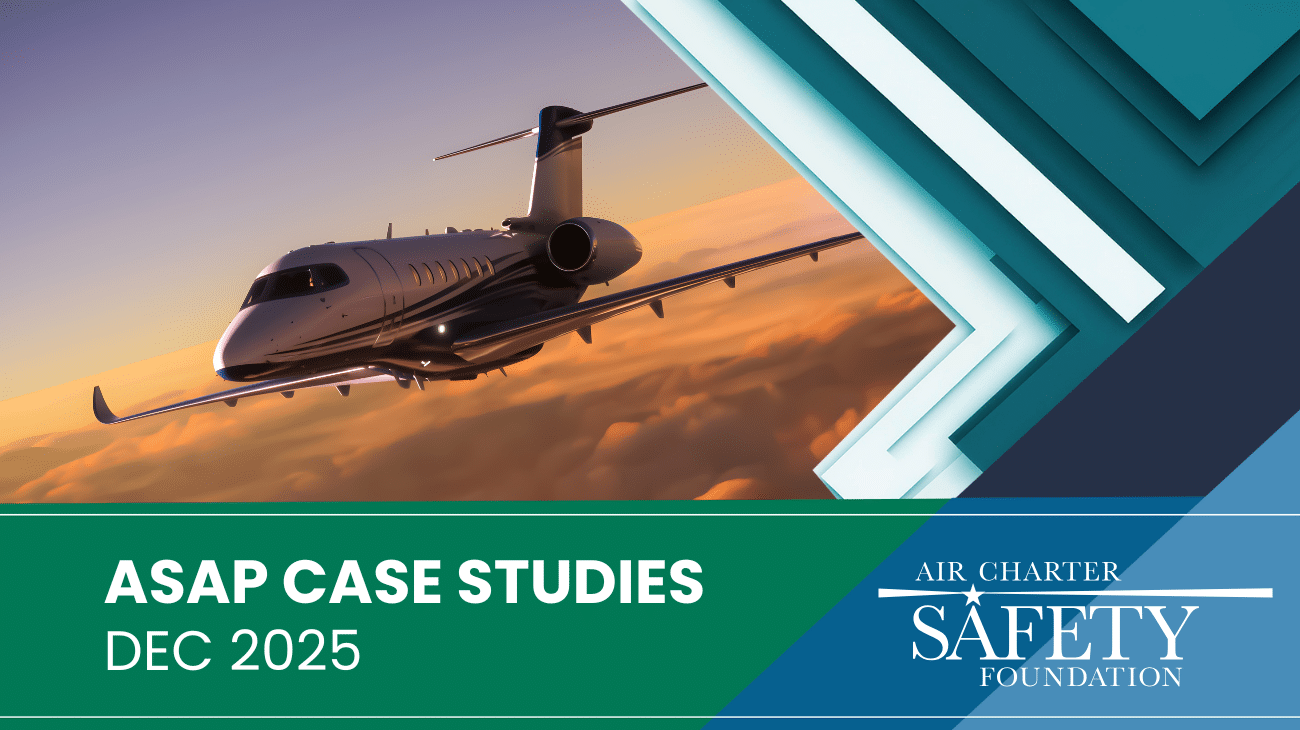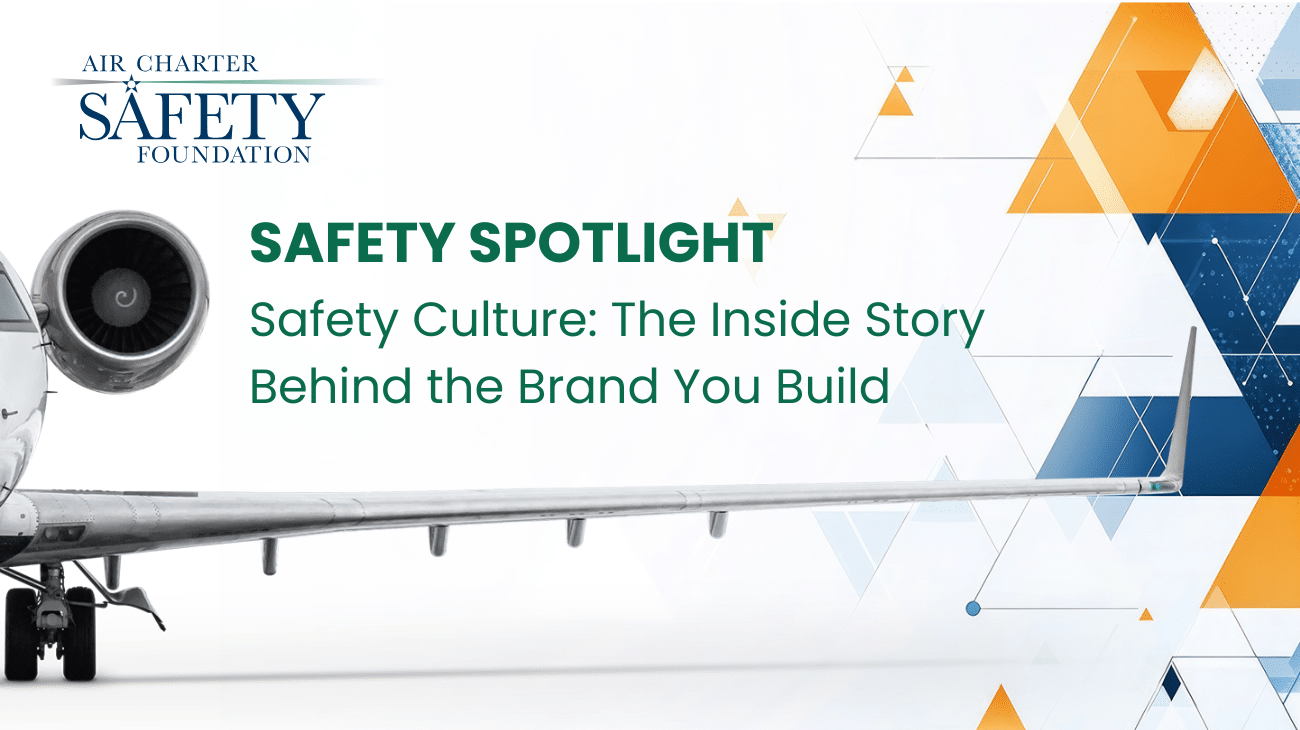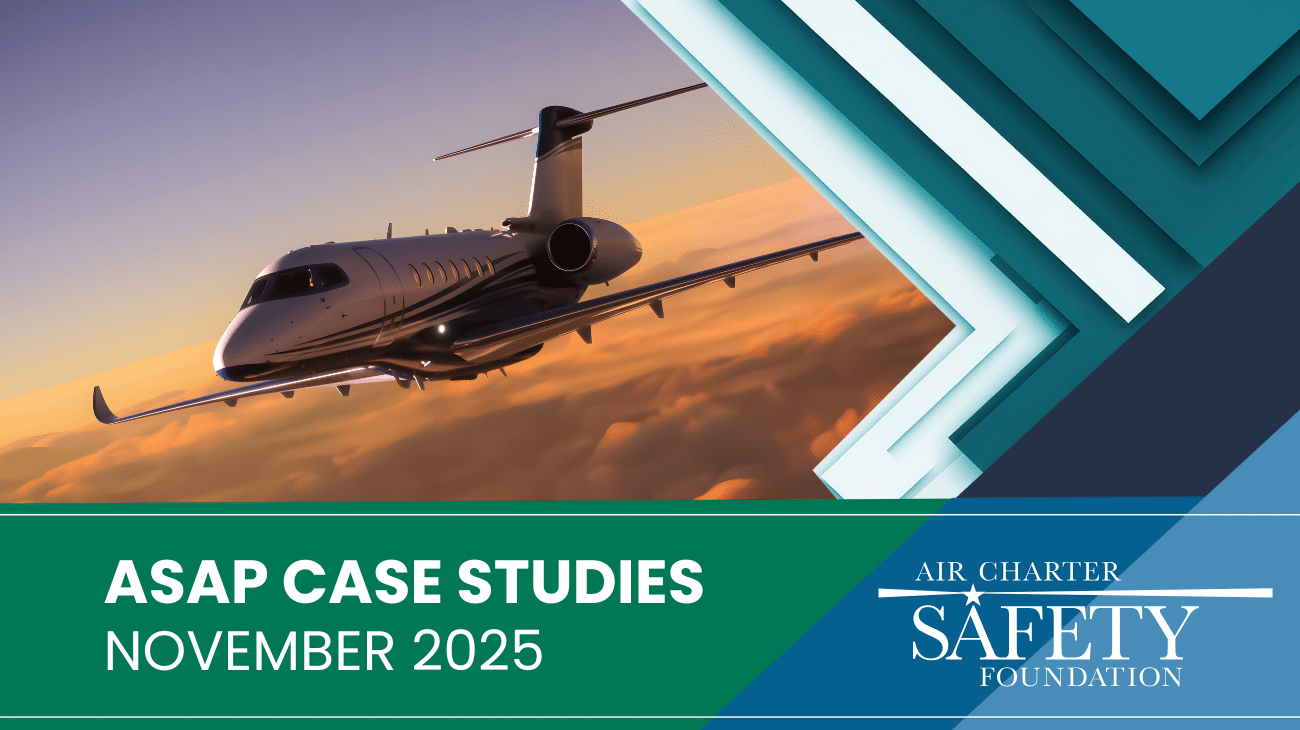Following are redacted ASAP reports from three participating Member companies during the April to June, 2023 time period. Please consider sharing these recommendations with your safety team in an upcoming training meeting.
NEAR AIRCRAFT COLLISION – WEAK RADIO COMMUNICATION
Overview:
- Radio communication was weak, and if the pilot didn’t see the aircraft earlier, it could have caused an aircraft collision.
- Weak radios prevented the pilot from determining if there were any aircraft taking off.
- Big Question: How do we fix this issue of pilots taking off with radio issues on CTAF (common traffic advisory frequency)?
Report Narrative:
On taxi out to runway 34 in KMEV, I noticed another airplane going in the opposite direction on the taxiway. I didn’t hear any radio communication and thought maybe the aircraft was heading to a hanger.
On holding short of the runway, I made a takeoff call that we were departing on runway 34 for a left downwind departure. I heard no communication on CTAF radio and, before turning on the runway, I told the other pilot to wait a second and hold, as I wanted to observe that no aircraft were departing runway 16.
Sure enough, an airplane lined up and took off on runway 16 with no radio communication. I attempted to reach [the Baron] several times, and he finally acknowledged me and said he heard all of my radio calls. He then made his radio calls and continued to takeoff after I also declared we were taking off.
If I hadn’t waited to make sure that the runway was clear and took off regardless, it could have resulted in a catastrophic collision on takeoff.
COURSE DEVIATION – ROUTE
Overview:
- Route was filed and the read-back had similar sounding waypoints (KIWII & QUIWE).
- Both waypoints are pronounced similarly, resulting in confusion for pilots.
Report Narrative:
We were cleared as filed from KSAV to KTEB. Our route was SMALZ MILEN QUIWE ORACL Q56 KIWII SWNGR JAKE4. On our climb out, ATC cleared us to fly direct to QUIWE. We read back and proceeded direct to KIWII.
Within a couple of minutes, ATC ask us again to turn direct to QUIWE. We read back to confirm that we were currently proceeding direct to KIWII. This time, we spelled the waypoint to verify and ATC spelled it as “QUIWE” to correct us. We told ATC that we would correct the mistake and proceed to QUIWE. The two waypoints are pronounced exactly the same, which led to the confusion.
REJECTED TAKEOFF – ATC INSTRUCTION
Overview:
- This was a very dangerous situation, and an aircraft collision was imminent.
- Pilots made a good decision to idle the throttle to takeoff on runway 16R.
Report Narrative:
We were scheduled to reposition the GV from KVNY to KLGB. No passengers were aboard and the flight was operated under 14 CFR Part 91. We completed all preflight duties and received clearance to taxi to runway 16R via taxiway B and C, and hold short of RWY 16L.
After significant delay holding short of RWY 16L, we were cleared for takeoff on runway 16R. We acknowledged the clearance and I, the pilot flying and PIC, taxied the airplane onto 16R and began advancing the throttles for takeoff. The airplane began to move forward down the runway.
Once we had achieved approximately 20 KTS of indicated airspeed, we observed a light, single-engine airplane fly over the top of us. I could see that the plane was landing on our runway, so I immediately reduced power to idle and stopped the airplane on the runway.
As I was initiating the low-speed RTO, VNY tower communicated to us, “Cancel takeoff clearance!” After bringing the airplane to a stop on the RWY, I asked the tower what happened, to which he replied, “I don’t know.” I then asked the tower for clearance to taxi off of the runway.
That clearance was granted, and we taxied back to the FBO. I immediately called the Chief Pilot and Director of Operations to explain the details of the event. I informed them that we were still fit to fly and agreed to complete the mission.
We, the crew, completed an additional pre-flight inspection of the airplane and confirmed via visual inspection and with the BTMS [Brake Temperature Monitoring System] that the brakes were cool and well within temperature limits to depart.
We received the same taxi instructions and were cleared for takeoff on runway 16R. We departed normally and landed in LGB without any further issues.
Not enrolled in the ACSF Aviation Safety Action Program? Apply today and submit your ASAP reports without retribution from the FAA.




